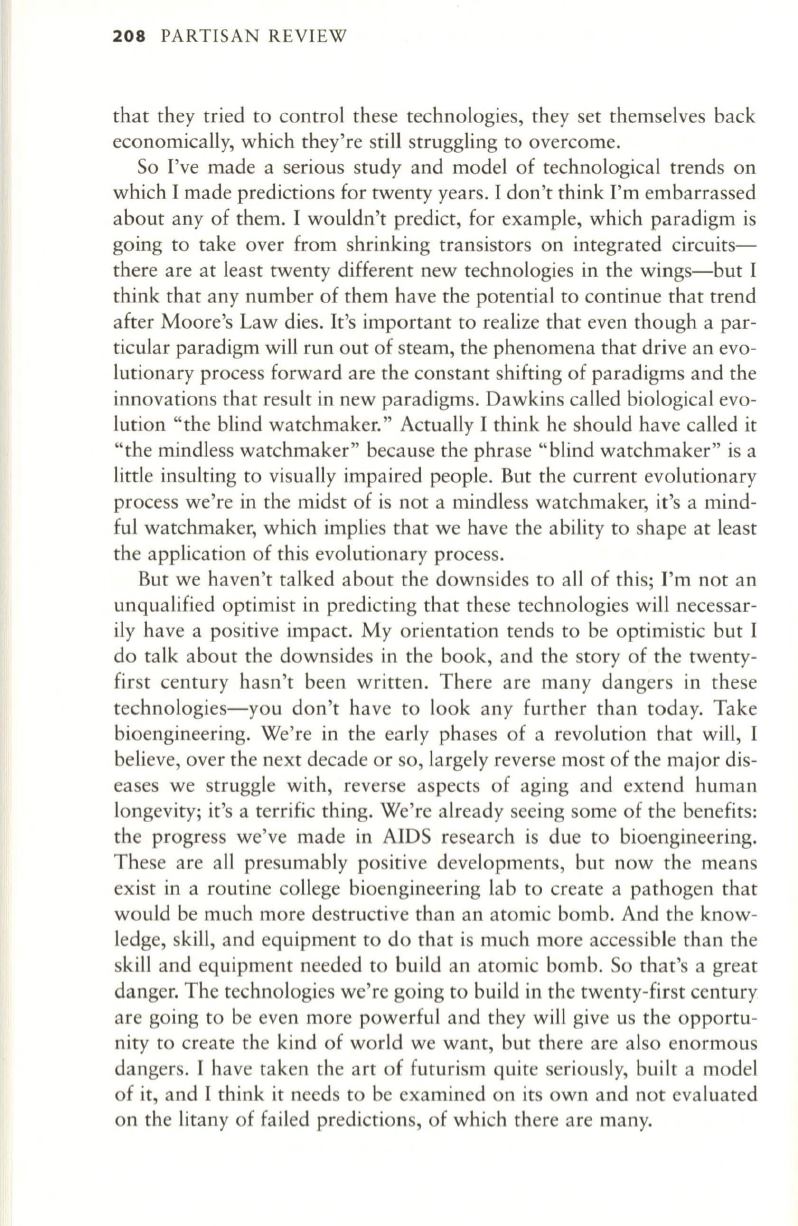
208
PARTISAN REVIEW
that they tried to control these technologies, they set themselves back
economically, which they're still struggling to overcome.
So I've made a serious study and model of technological trends on
which I made predictions for twenty years. I don't think I'm embarrassed
about any of them. I wouldn't predict, for example, which paradigm is
going to take over from shrinking transistors on integrated circuits–
there are at least twenty different new technologies in the wings-but I
think that any number of them have the potential to continue that trend
after Moore's Law dies. It's important to realize that even though a par–
ticular paradigm will run out of steam, the phenomena that drive an evo–
lutionary process forward are the constant shifting of paradigms and the
innovations that result in new paradigms. Dawkins called biological evo–
lution "the blind watchmaker." Actually I think he should have called it
"the mindless watchmaker" because the phrase "blind watchmaker" is a
little insulting to visually impaired people. But the current evolutionary
process we're in the midst of is not a mindless watchmaker, it's a mind–
ful watchmaker, which implies that we have the ability to shape at least
the application of this evolutionary process.
But we haven't talked about the downsides to all of this; I'm not an
unqualified optimist in predicting that these technologies will necessar–
ily have a positive impact. My orientation tends to be optimistic but I
do talk about the downsides in the book, and the story of the twenty–
first century hasn't been written. There are many dangers in these
technologies-you don't have to look any further than today. Take
bioengineering. We're in the early phases of a revolution that will, I
believe, over the next decade or so, largely reverse most of the major dis–
eases we struggle with, reverse aspects of aging and extend human
longevity; it's a terrific thing. We're already seeing some of the benefits:
the progress we've made in AIDS research is due to bioengineering.
These are all presumably positive developments, but now the means
exist in a routine college bioengineering lab to create a pathogen that
would be much more destructive than an atomic bomb. And the know–
ledge, skill, and equipment to do that is much more accessible than the
skill and equipment needed to build an atomic bomb. So that's a great
danger. The technologies we're going to build in the twenty-first century
are going to be even more powerful and they will give us the opportu–
nity to create the kind of world we want, but there are also enormous
dangers. I have taken the art of futurism quite seriously, built a model
of it, and I think it needs to be examined on its own and not evaluated
on the litany of failed predictions, of which there are many.


